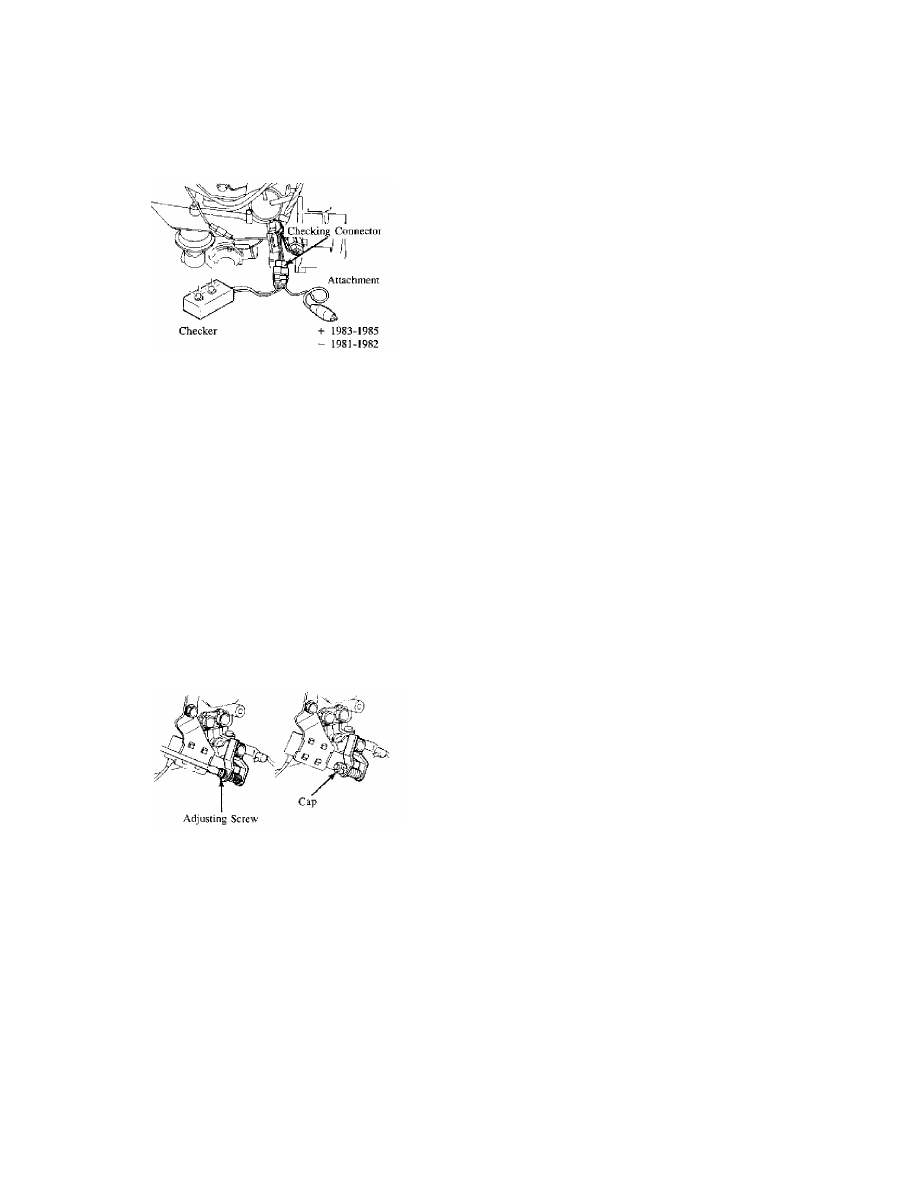Mazda RX7. Manual - part 95

1.3L ENG THROTLE SENSR TOOL & ADJUSTMENT INFO CAT. 40, NO. 007/85
Article Text (p. 3)
1983 Mazda RX7
For www.iluvmyrx7.com
Copyright © 1998 Mitchell Repair Information Company, LLC
Saturday, September 08, 2001 09:30AM
Fig. 5: Throttle Sensor Checker Attachments
4. Attach the red clip of the attachment to the battery as follows:
+ terminal - 1983-1985 RX-7
- terminal - 1981-1982 RX-7
5. Start the engine. Raise the engine speed to 3000 rpm and release
the throttle. Check that the green and red lamps illuminate at
the same time.
6. If the green and red lamp do not illuminate at the same time,
proceed as follows:
* Remove the cap from the adjusting screw. See Fig. 6.
* If the red lamp illuminates first. turn the adjusting screw
counterclockwise until both lamps illuminate at the same
time.
* If the green lamp illuminates first turn the adjusting screw
clockwise until both lamps illuminate at the same time.
7. Install the cap on the adjusting screw.
8. Connect the connecter (brown) disconnected in Step 2.
Fig. 6: Throttle Sensor Adjusting Positions
END OF ARTICLE